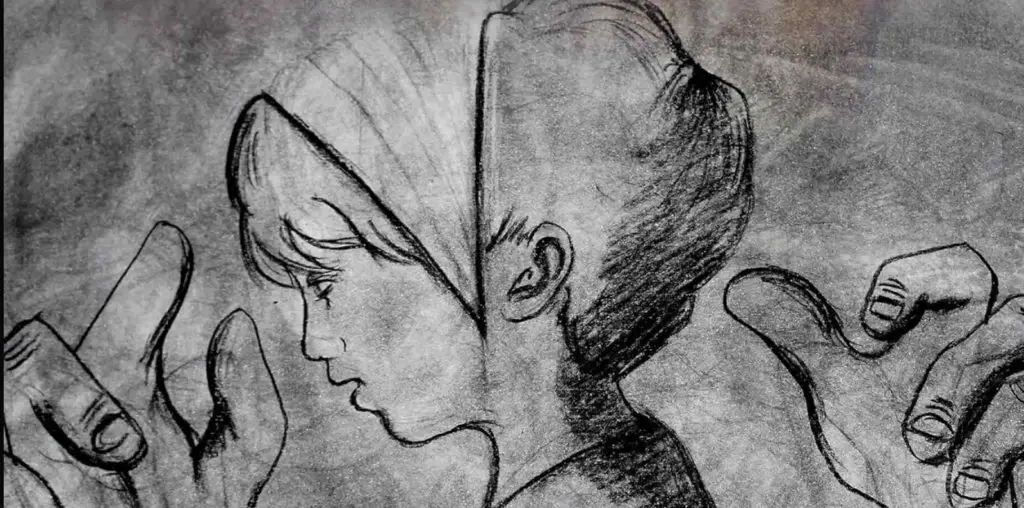
Shot mostly on digital video, “At Home and Asea” is a portrait of five young-to-middle-aged people, drifting through life somewhat aimlessly in Baltimore. Shot in faux-documentary style with a script improvised by the actors, the film skillfully evokes the floating world of the characters, in which their freedom seems paradoxically to create a sense of entrapment. (“I chose this!” says one character, incredulous at how her own choice to come home and care for her sick mother seemed to make her ambitions to become an actress evaporate.)
The most focused of the lot is Windsor, a young man in search of the father he never knew. While he is quite persistent in his pursuit of the people who knew his father, he doesn’t quite seem to know what he wants to do with the information. His father’s experiences as the only black person living in a white neighborhood seem to offer Windsor some clues about his own relationship to white society.
On the other hand, Alicia, one of three mothers in the film, barely seems to know how to put one foot in front of the other as she stumbles through single parenthood. While complaining about how “those f*****g kids in the neighborhood” taught her 4-year-old how to curse, she can’t seem to make true her dream of getting a car, or even a better job than her waitressing gig where the boss gives her the worst shifts whenever he’s mad at her.
Talking head style interviews alternate with atmospheric shots of the city. While some shots are digitally colorized to no particular expressive effect (except for one powerful fade to black and white, underscoring the colorlessness that comes with the characters’ depression), repeated shots of small craft drifting in and out of the fogbound harbor function superbly as the film’s keystone image of rudderless stasis. Guy Yarden’s score of processed violin sounds deftly supports the atmosphere.
Street’s intelligent feel for timing, interesting shots, and the always telling cut (one character’s reference to her wish for more space and openness leads immediately to a shot of the distant waterfront) makes this film an engaging, intriguing experience. The film’s limitation comes from the supremely daunting task Street has set himself; to make a film about bored, directionless people which is not itself a boring, directionless film. To succeed at such a task, one does not need to add zippy distractions to the film. Rather, the task is to dig underneath the boredom and depression, to find hints of the rage, desire, and buried passions, which are being masked and protected. “At Home and Asea” has some moments, which hint at these hidden depths, such as the affecting moment when the woman who cares for her sick mother admits her shame and amazement that she has to physically care for her mother “like a baby.” Moments like this reveal the potentially great movie, which is hidden within this good movie.

